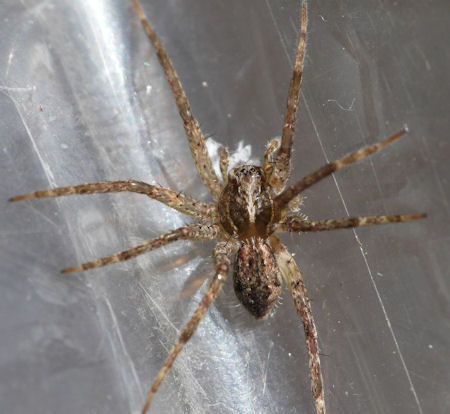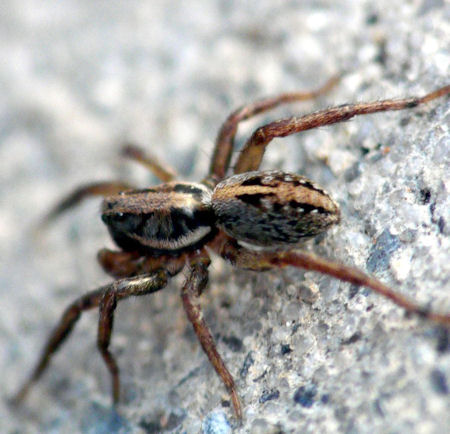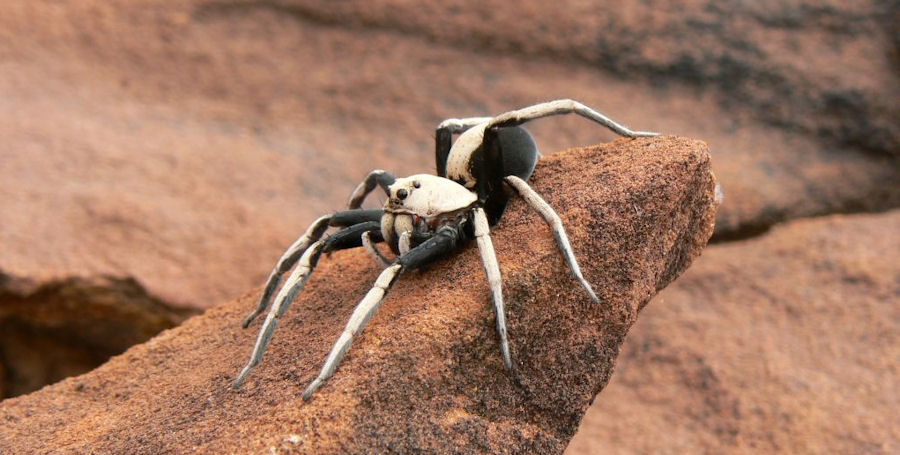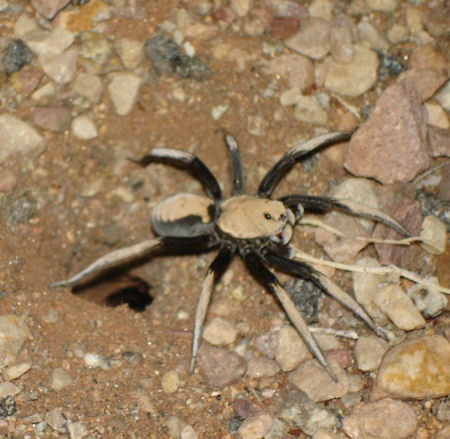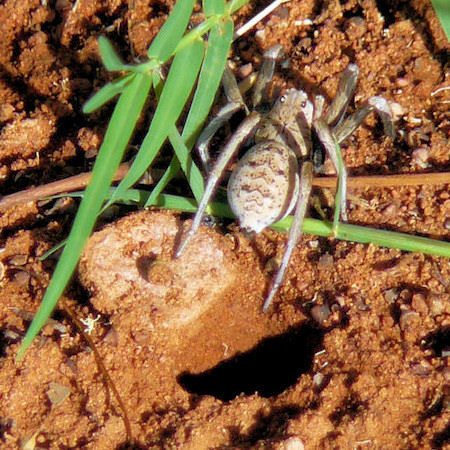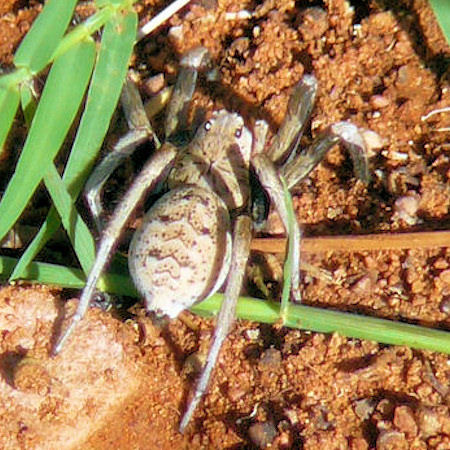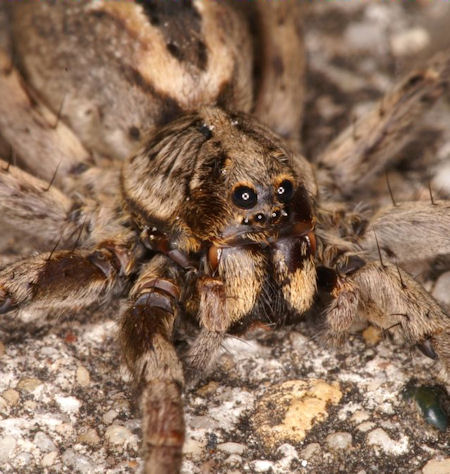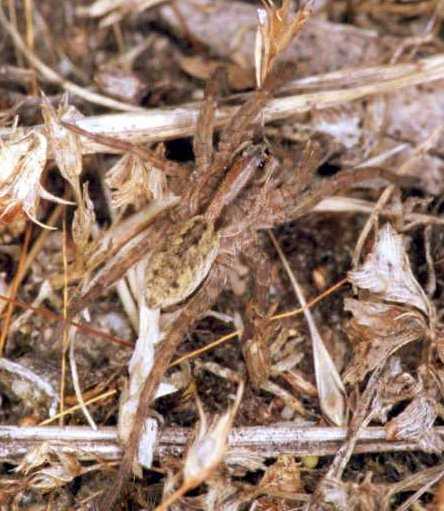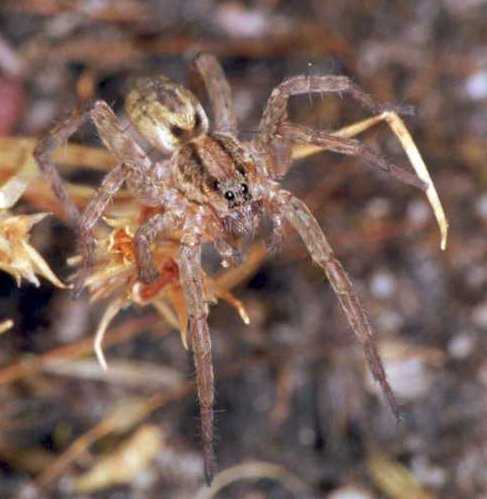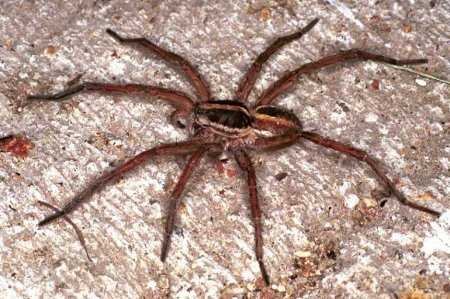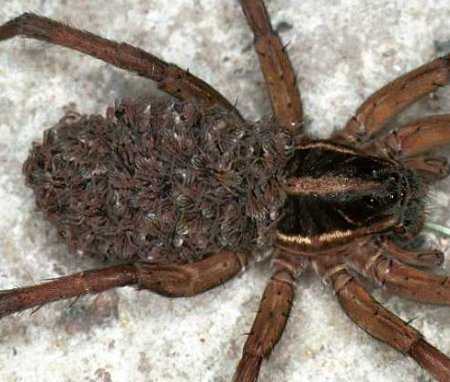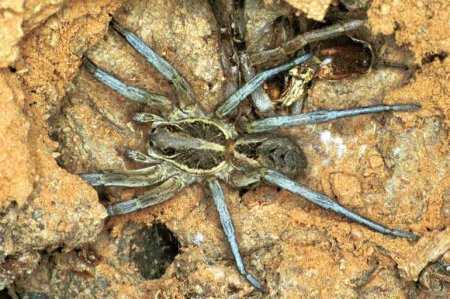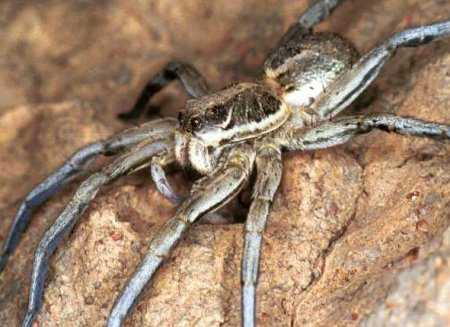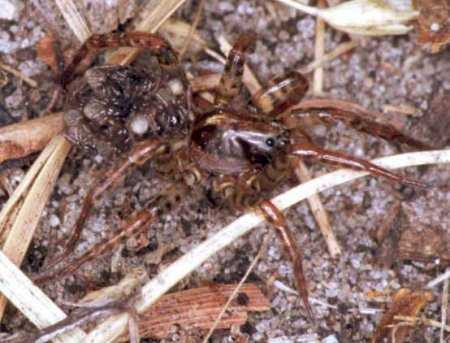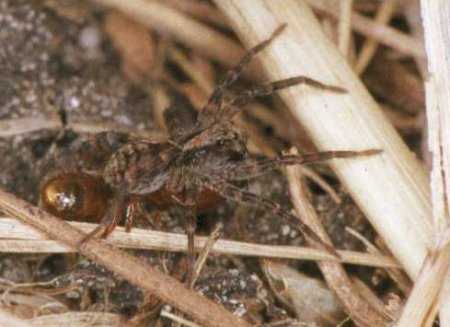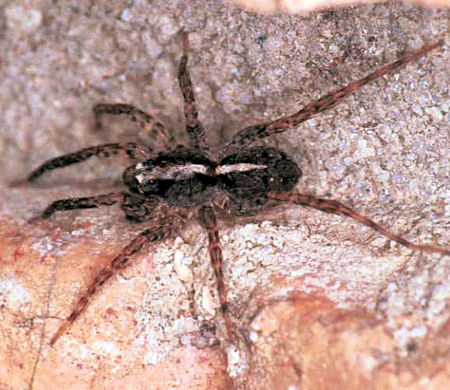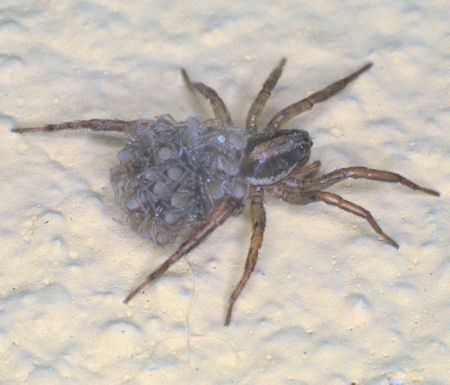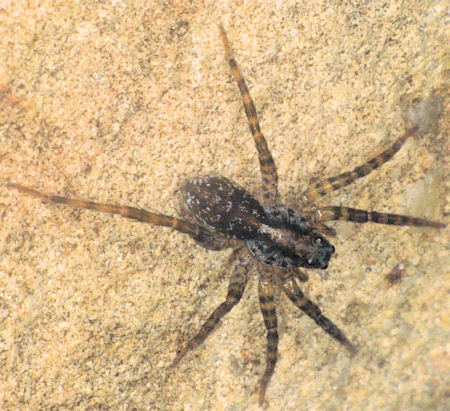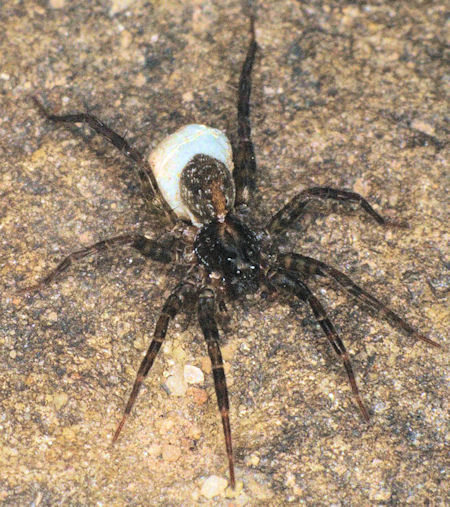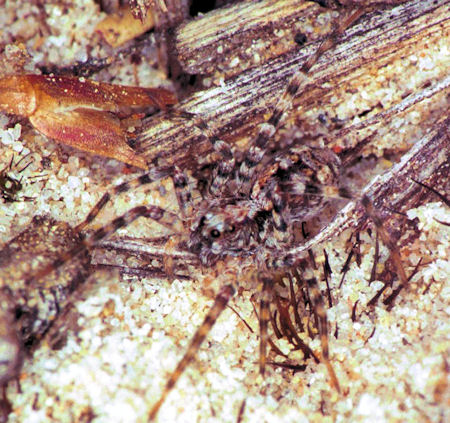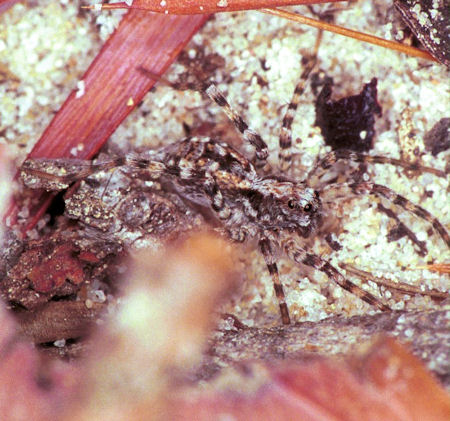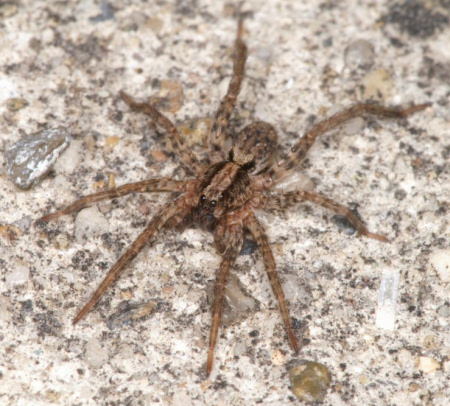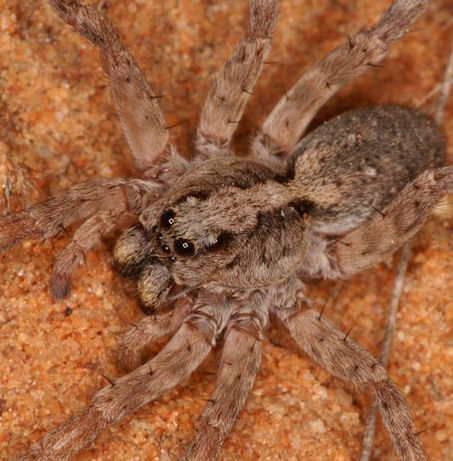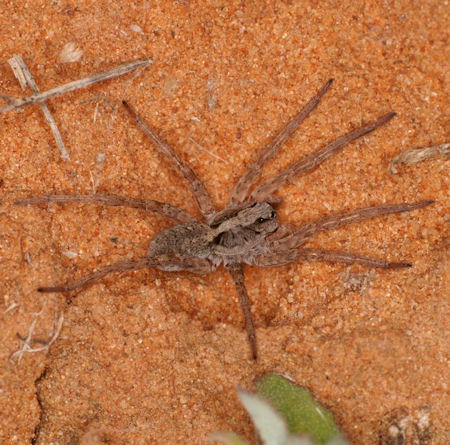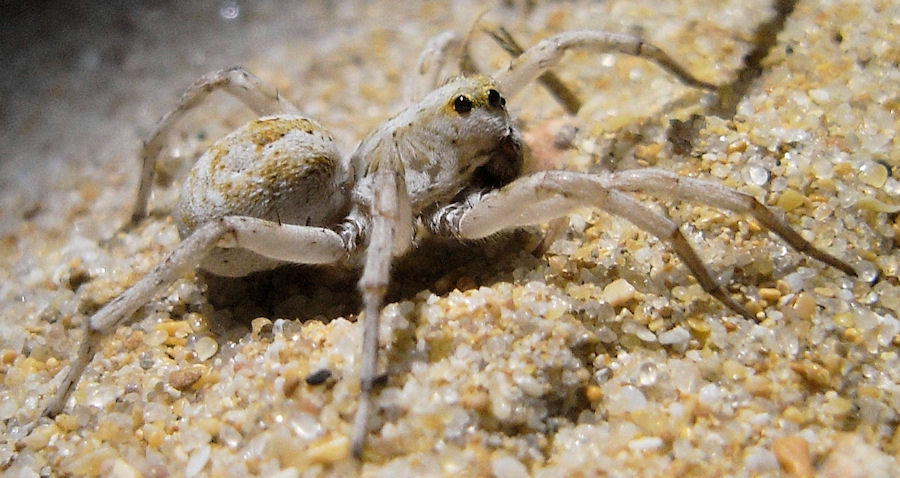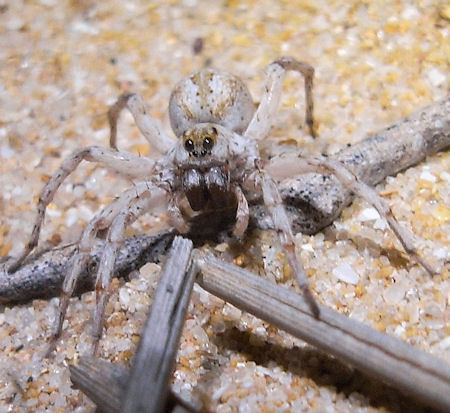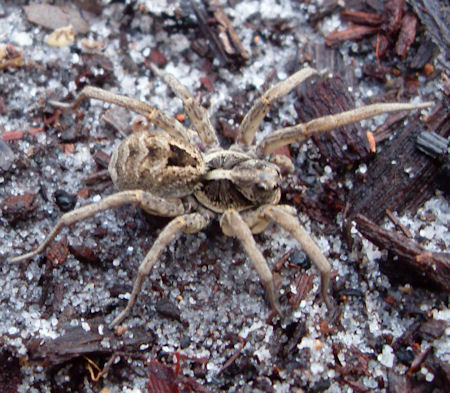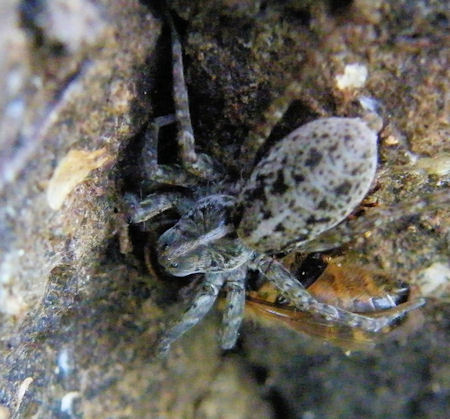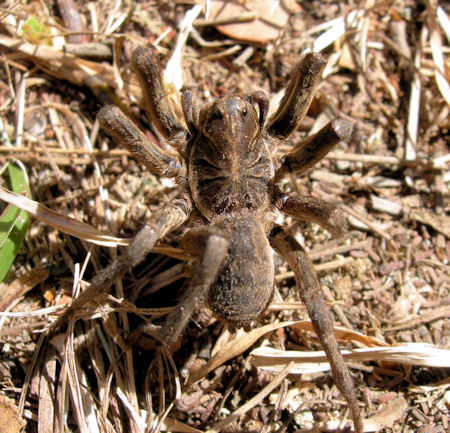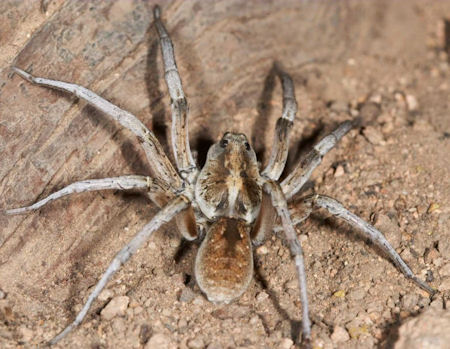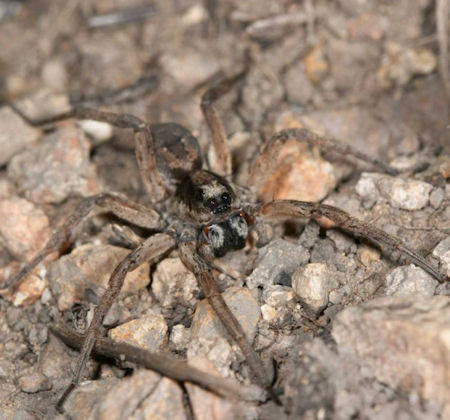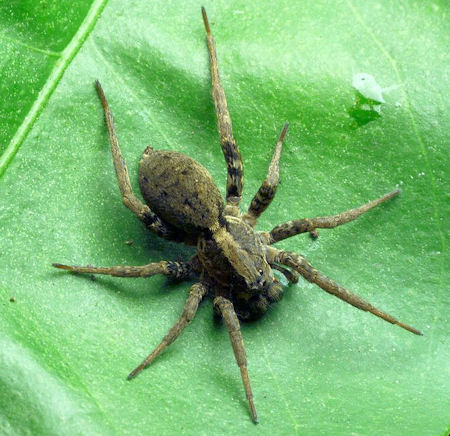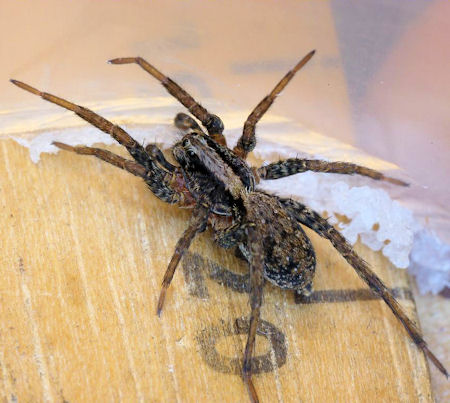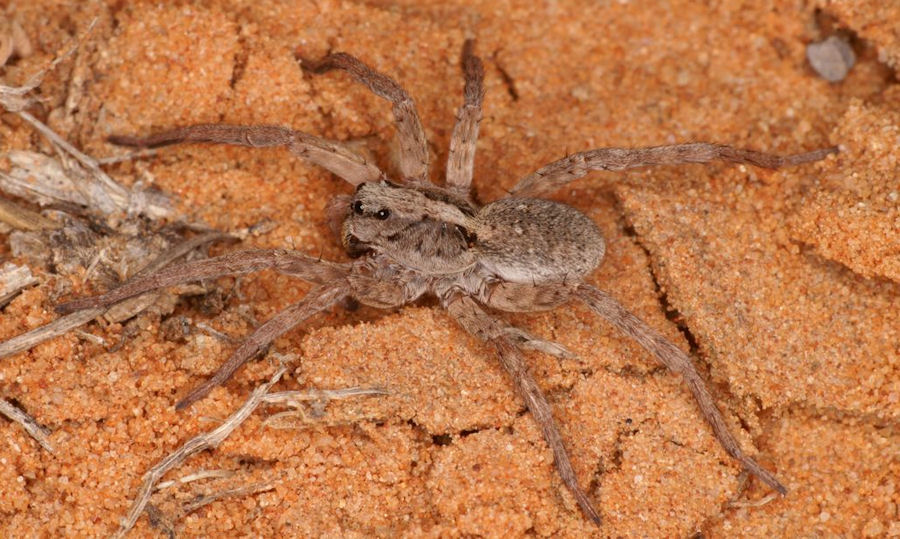
Lycosa species
ß Home
These spiders are real hunters and have excellent eyesight. They are rather big and are easily spotted on places in the sun, often at damp places. If you spot spiders speeding away on the ground and several spiders have white sacs attached to their spinnerets at the back of their body you can be sure you deal with wolf spiders.
Their name "wolf spider" is derived from the fact that people erroneously thought they hunted in groups like wolves. In Australia there are 130 descibes species in nine genera.
The spider lives in every variety of terrestrial habitats. They can even been found on the water skating over it and even diving under the surface catching small fish and insects.
The cephalothorax (head-breast part) is elongated and usually high and narrowed in the front. They have eight eyes. Four small ones are located at the lower part of the face. Immediately above these there are two large eyes looking forward and father back there are also two big eyes that look upward. In this way the spider can look in four directions and can perceive moving insect at a distance of several inches. The legs and chelicera (jaws) are robust. The spider vigorously attacks her prey crushing it with her stout chelicera.
The majority of the genera carry their eggs in an egg sac attached at the back of their abdomen. Some genera (Arctosa, Trochosa and Alopecosa) keep their eggs under the ground in web coated holes or tubes. The youngsters crawl on top of the abdomen of the mother and stay there until they change their skin for the first time. The female spider is a creature with a variable temper. Notorious for her rapacious activities, she displays solicitude for her eggs and young that can scarcely be met by any other spider. Her egg-sac, attached to her spinnerets, is a precious thing she will defend with her life. Her instinct is very powerful but she also can be easily fooled. When her egg sac is changed for something artificial, like a piece of cork or a wad of paper or cotton, she also will defend the artificial sac with her life. After two or three weeks, her young develop to a point where they can leave the sac. The mother bite open the sac and within a few hours all the young has climbed on the abdomen where they will stay until their first change of skin. During that time the mother will engage her normal hunting activities with her young tightly attached to her body. When the young are brushed from her body they will crawl back very quickly. In the time the young are attached at the body of their mother they do not eat. Their bodies are supplied with enough food to live during this period. The youngsters do drink water during their stay by drinking dewdrops in the morning.
